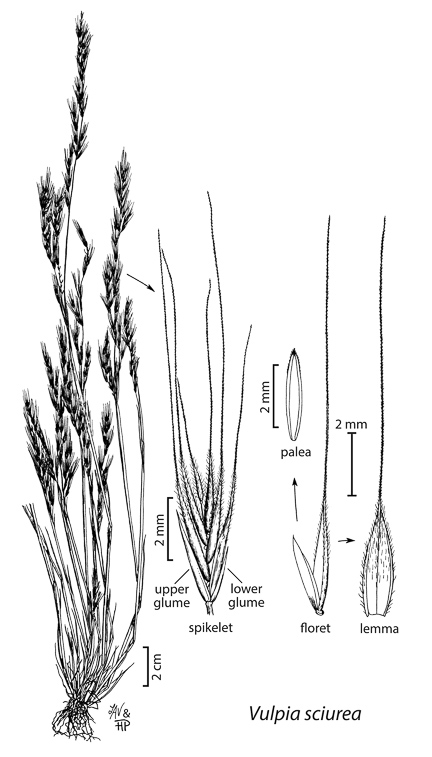|
Family: Poaceae |
Robert I. Lonard Plants usually annual, rarely perennial. Culms 5–90 cm, erect or ascending from a decumbent base, usually glabrous. Sheathsopen, usually glabrous; auricles absent; ligules usually shorter than 1 mm, membranous, usually truncate, ciliate; blades flat or rolled, glabrous or pubescent. Inflorescences panicles or racemes, sometimes spikelike, usually with more than 1 spikelet associated with each node; branches 1–3 per node, appressed or spreading, usually glabrous, scabrous. Spikelets pedicellate, laterally compressed, with 1–11(17) florets, distal florets reduced; disarticulation above the glumes and beneath the florets, occasionally also at the base of the pedicels. Glumes shorter than the adjacent lemmas, subulate to lanceolate, apices acute to acuminate, unawned or awn-tipped; lower glumes much shorter than the upper glumes, 1-veined; upper glumes 3-veined; rachillas terminating in a reduced floret; calluses blunt, glabrous; lemmas membranous, lanceolate, 3–5-veined, veins converging distally, margins involute over the edges of the caryopses, apices entire, acute to acuminate, mucronate or awned; paleas usually slightly shorter than to equaling the lemmas, sometimes longer; anthers usually 1, rarely 3 in chasmogamous specimens. Caryopses shorter than the lemmas, concealed at maturity, elongate, dorsally compressed, curved in cross section, falling with the lemma and palea. x = 7. Named for J.S. Vulpius, who studied the flora of Baden, Germany. Vulpia, a genus of 30 species, is most abundant in Europe and the Mediterranean region (Cotton and Stace 1967). The Floraregion has three native and three introduced species. Most species, including ours, are weedy, cleistogamous annuals, usually having one anther per floret. Festuca, in which Vulpia is sometimes included, consists of chasmogamous species having three anthers per floret. The two genera are closely related to each other. Sterile hybrids between Vulpia and Festuca, and Vulpia and Lolium, are known. In the key and descriptions, the spikelet and lemma measurements exclude the awns. |


